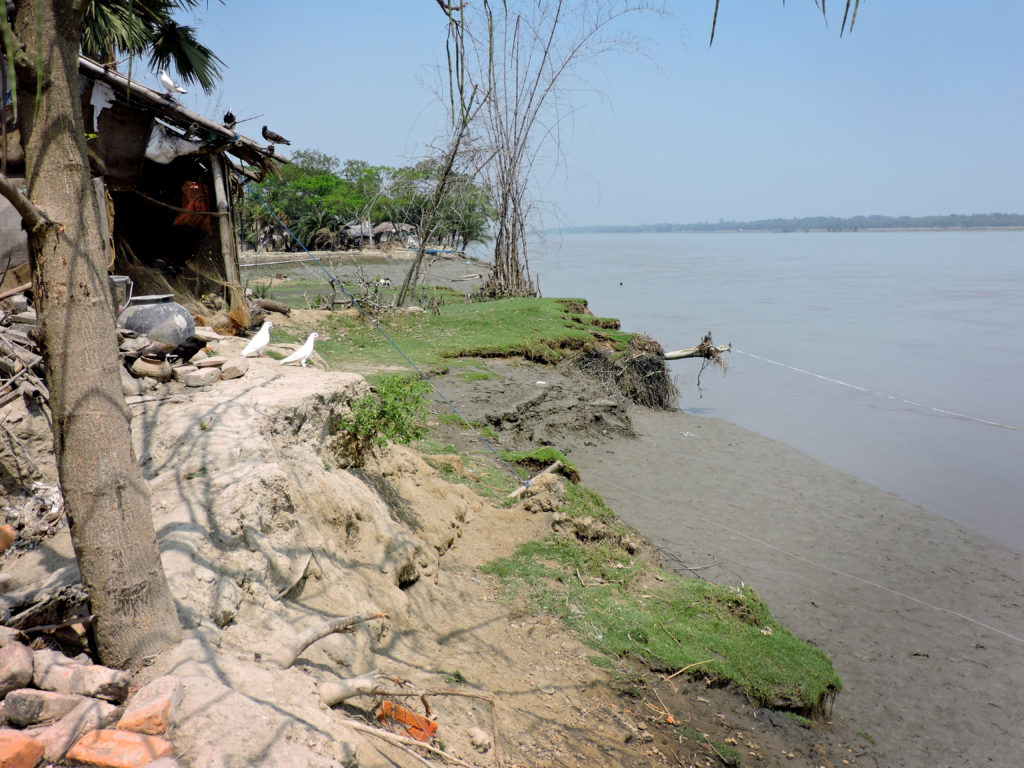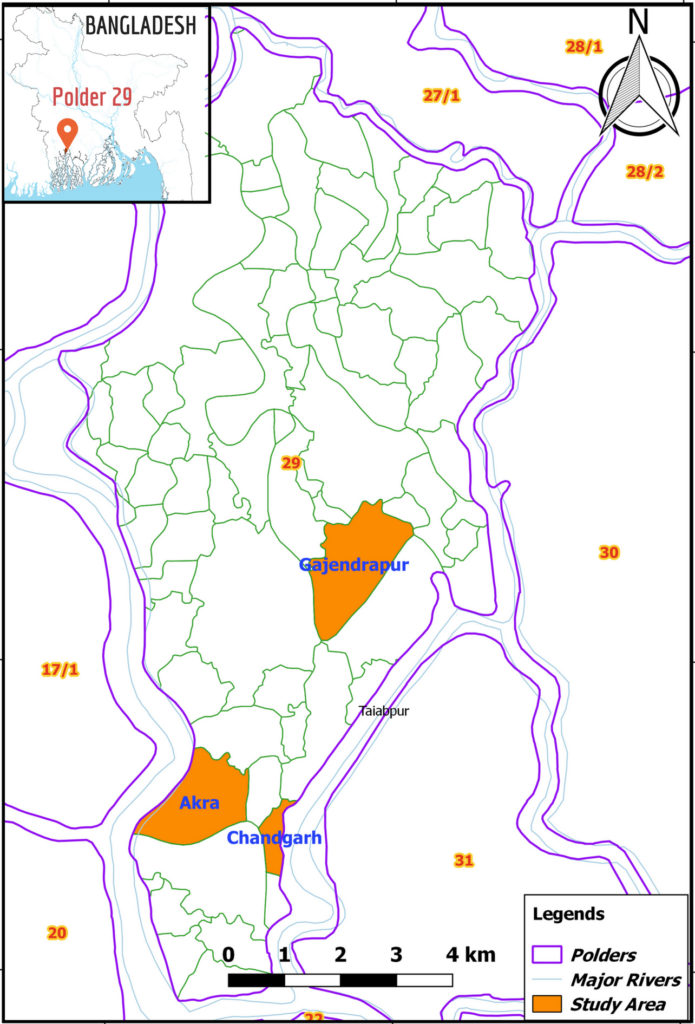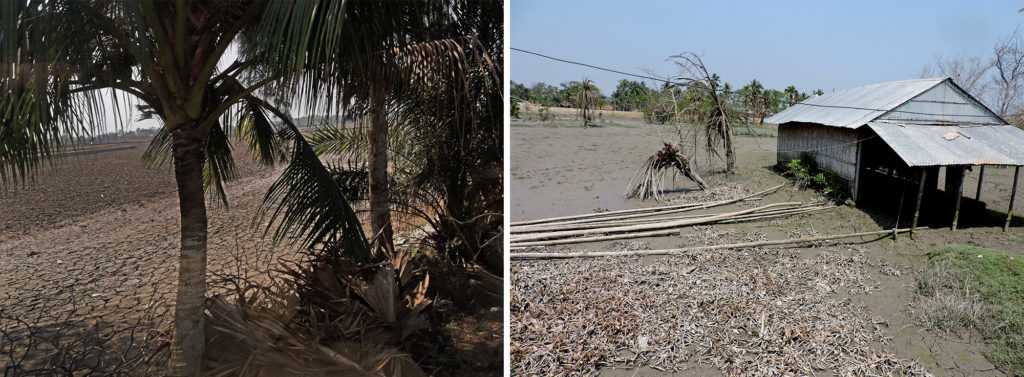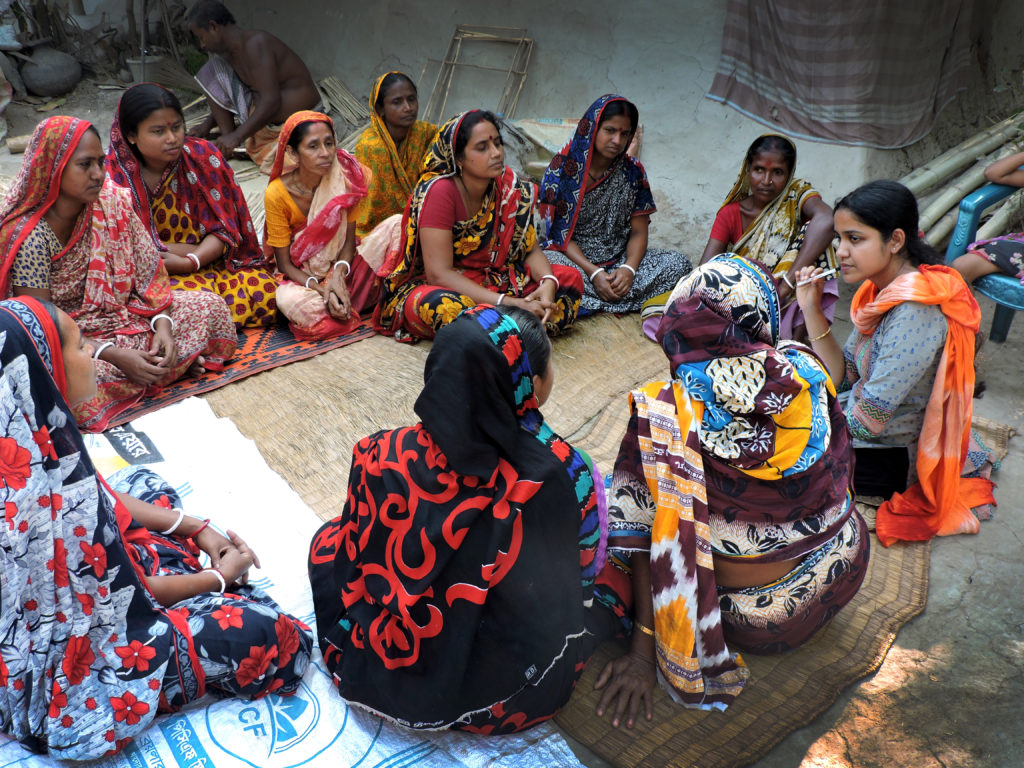Sabrina Zaman, MPhil Student, University of Dhaka
Sabrina Zaman is an MPhil student at the Institute of Disaster Management and Vulnerability Studies (IDMVS), University of Dhaka, Bangladesh. Her research contributes to the REACH ‘Coastal Water Security’ Observatory by exploring the distributional outcomes of water insecurity on poor communities, with a particular focus on women, in Khulna district.
Sabrina has completed her Bachelor’s and Master’s degrees in Sociology from Jagannath University, Dhaka, Bangladesh. She also has received another Master’s degree in South Asian Studies in 2015 from Pondicherry University, India. She has previously worked as a field research assistant and as senior research assistant at icddr,b.
In this short interview Sabrina shares with us key insights from her research.
Tell us about your research and how it relates to REACH:
My main interest in doing an MPhil degree at IDMVS, was to study the impacts of extreme climatic events such as floods, cyclones, salinity intrusion, and heavy precipitation, which are threatening livelihoods and intensifying water risks, for women in particular, in coastal Bangladesh. My supervisor Prof. Mahbuba Nasreen is a pioneer researcher in the field of gender, disaster and climate change, and I was keen to contribute to the REACH programme, which has a strong gender focus. From the literature I find that people in coastal areas face many climatic and biophysical risks. Women are particularly vulnerable to those risks, and are having to change their behaviours to cope and secure their livelihoods.
Water risks have been identified as one of the main constraints to achieving sustainable livelihoods in coastal Bangladesh. Thus, the REACH Khulna Observatory is looking at ways of reducing water risks to build resilient communities. The first goal of my research is to appraise the nature of water related risks and to understand ways in which the coastal poor – women in particular – are dependent on water for their livelihoods. The second objective is to explore the different impacts of water risks on their livelihoods. Finally, I aim to understand the gender-based alternative adaptation options taken by the coastal people to reduce water risks.
Why is your research relevant and important in the Bangladeshi context?
The recurrent climatic variability and prevalence of natural disasters threaten the lives and livelihoods of marginal communities living in coastal Bangladesh. In particular, climatic events such as extreme and erratic rainfall, and drought, which are worsened by climate change, have a severe negative impacts on agricultural production. Moreover, high salinity levels are causing a safe drinking water crisis and affecting agricultural yields.
 The impacts of river erosion in polder 29, Khulna district
The impacts of river erosion in polder 29, Khulna district
Women, who are primarily responsible for carrying and preserving water for domestic and other uses, are particularly vulnerable (Nasreen, 2012). Limited access to and control over resources exclude women from economic opportunities, thereby increasing inequalities. In addition, limited opportunities to make decisions at the household and community levels have marginalised their roles in mitigating water risks.
Although women are the first to feel the impacts of climate extremes and variability, they are key agents of water risk management at the household and community levels. Thus, a gender balance perspective is needed to understand how coastal communities are affected by and mitigate those water risks in coastal Bangladesh.
What have been some of the early findings for your research?
Coastal Bangladesh is made up of polders, which were constructed in the 1960s to protect the coast from tidal flooding and reduce salinity intrusion. As part of my research three villages (Akra, Chandgarh and Gajendrapur) were selected from polder 29, the REACH study area for the Khulna Observatory. Findings from my research highlights heterogeneous levels of risks and experiences with water security across the three villages sampled in the polder.
 Location of the three villages sampled in polder 29, Khulna district
Location of the three villages sampled in polder 29, Khulna district
1. The southern part of the polder faces higher levels of water-related risks
First, salinity intrusion and river erosion were the main concerns highlighted by respondents in the southern part of the polder, in Chandgarh and Akra. In contrast, respondents in Gajendrapur only highlighted the issue of salinity. These issues are especially severe during the dry season (January-April), when cultivable land becomes more shrivelled and the soil becomes more brackish. As such, seasonal drought was also identified as an important stress. Some farmers used sugar in agricultural fields to reduce salinity levels for their crops. However marginalised and economically disadvantaged groups did not have this opportunity.
 Seasonal drought in Chandgarh Left – March 2018) | Loss of property and crop lands due to river erosion in Chandgarh (Right – March 2018)
Seasonal drought in Chandgarh Left – March 2018) | Loss of property and crop lands due to river erosion in Chandgarh (Right – March 2018)
In addition, the southern parts of the polder faced higher risks from cyclonic storm, damaging people’s land and properties. This also contributed to men and women leaving the area to seek better livelihoods, often leaving their families behind. Significant number of women reported having to sell valuable assets like jewellery, land, livestock, and household utensils to sustain themselves.
Higher-levels of hazards in the southern part of the polder, led to more negative impacts on agricultural production, drinking water, and overall well-being and health, as discussed below.
2. Women face high-levels of gender discrimination in the workplace
High-levels of salinity and erosion in the southern parts of the polder (Chandgarh and Akra) affected agricultural production, so many women had to work outside of the area to sustain their livelihoods. There, they faced various types of gender discrimination: women were often paid less than men, even for the same workload, and worked long hours (in addition to their household chores, such as collecting water). The women who worked in the sector of agriculture and aquaculture, and casual labour workers, earned only half the amount men earned. In contrast, in Gajendrapur village, which suffers from less water risks, women were for the most part able to self-sustain themselves without needing to find work in other areas
3. Women bear the burden of fetching water
Due to the low quality of water in Chandgarh and Akra, women walked on average around three to four kilometres and six to seven kilometres respectively to fetch water from shallow tube-wells. However, the quality from those shallow tube-wells remains low, and their only alternative was to purchase it from water vendors by paying Tk. 20 for 20 litters of water. In situations where they were not able to buy sufficient water for their households, women saved the safer water (from water vendors) for their children and husbands and they drank the largely unsafe water from shallow tube-wells.
 Sabrina leading Focus Group Discussions with female participants in Akra (March 2018)
Sabrina leading Focus Group Discussions with female participants in Akra (March 2018)
4. Higher levels of health impairments in the southern parts of the polder
Lastly, I found that both women and men faced more health issues in Akra and Chandgarh, as compared to Gajendrapur. Respondents reported suffering from gastric pain, vomiting, menstrual cramps, genital problems, breathing problems, diarrhea, pain in body, itching in the whole body, skin diseases, and infection in eyes. They perceived salinity to be the key driver of those health hazards.
What aspects of your research are you particularly excited about?
Though the government and NGOs have taken initiatives to address water risks, women’s access to safe water continues to lag behind. Large infrastructural developments for water security on their own cannot be seen as a panacea for improving water security. An understanding of how coastal communities are being affected by water related hazards, and which groups are most vulnerable, is critical to ensure equitable development and reduce inequalities. My research contributes to this understanding and finds that empowering women is a prerequisite to improving water security in coastal zone. I find that women are playing a critical role in decision-making to improve water security, for instance by installing water infrastructure at households and community level. Engaging women in agriculture, can also empower them by increasing their social recognition, while allowing them to sustain themselves and contribute to their households. Learning from different adaptation options can increase their resilience and reduce their vulnerability to water risks.

